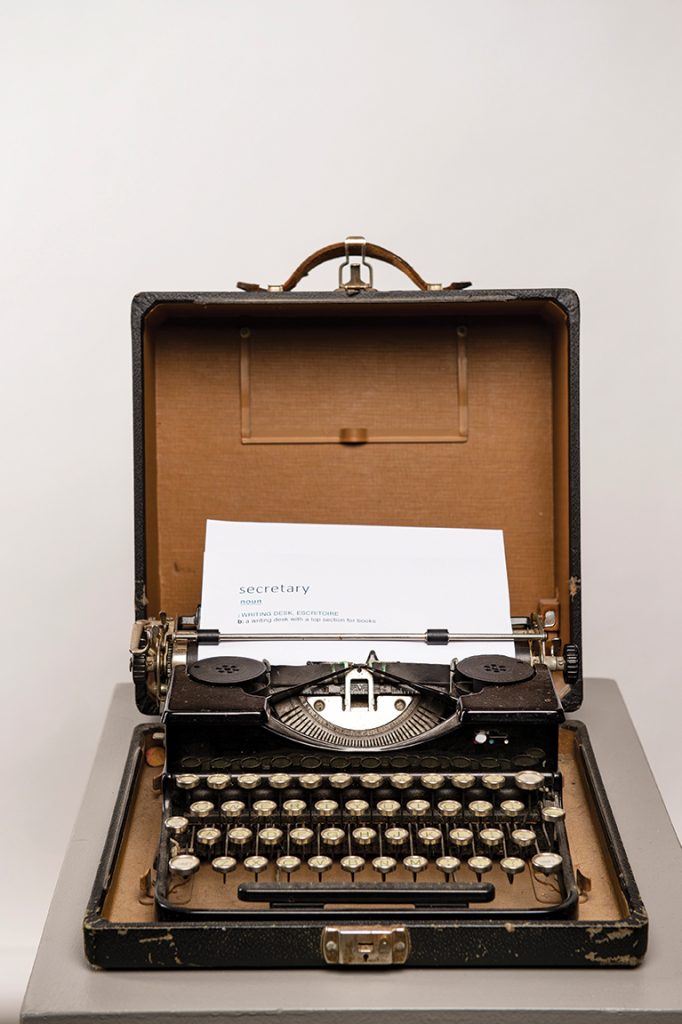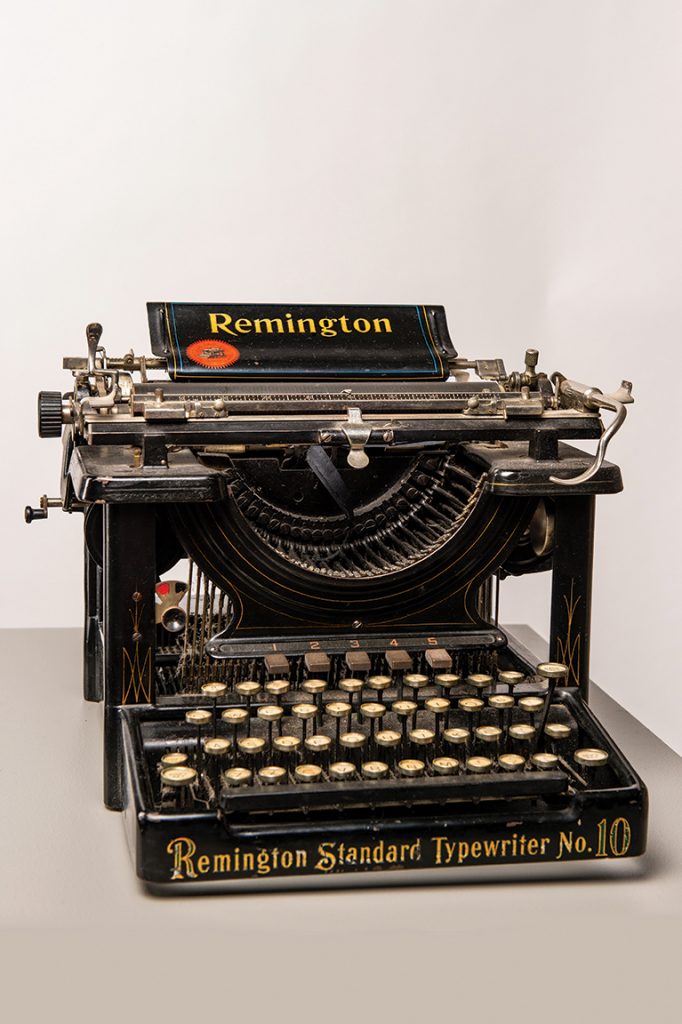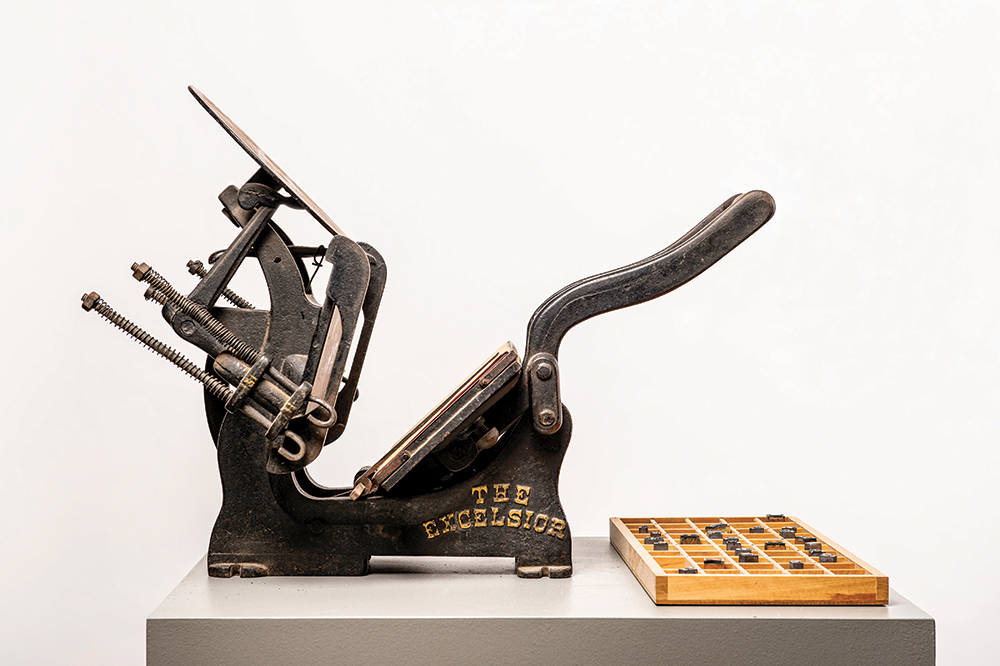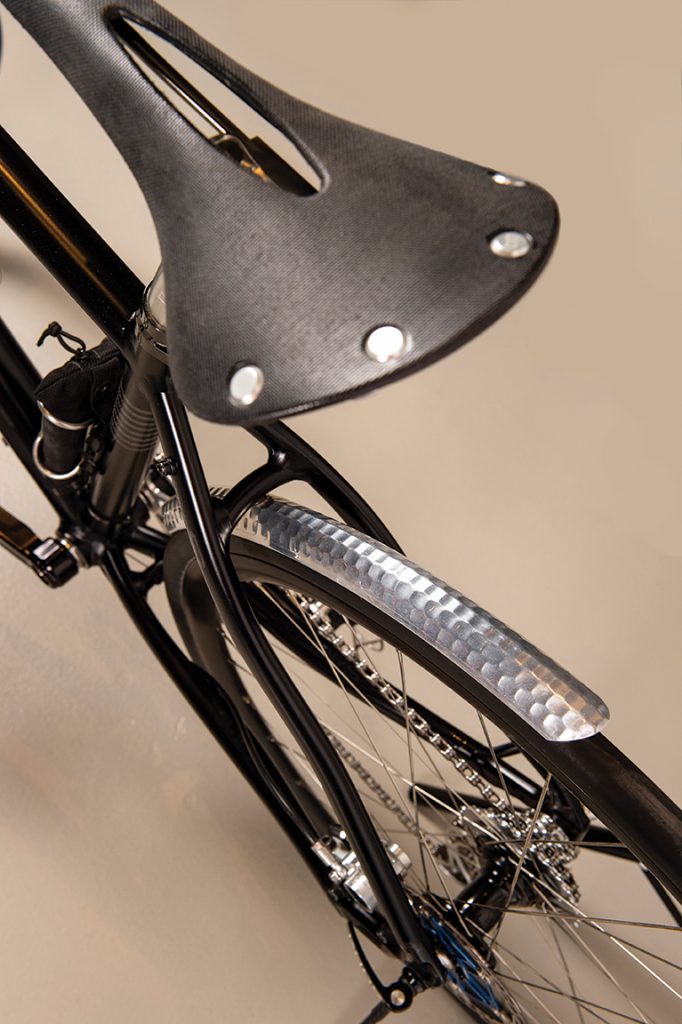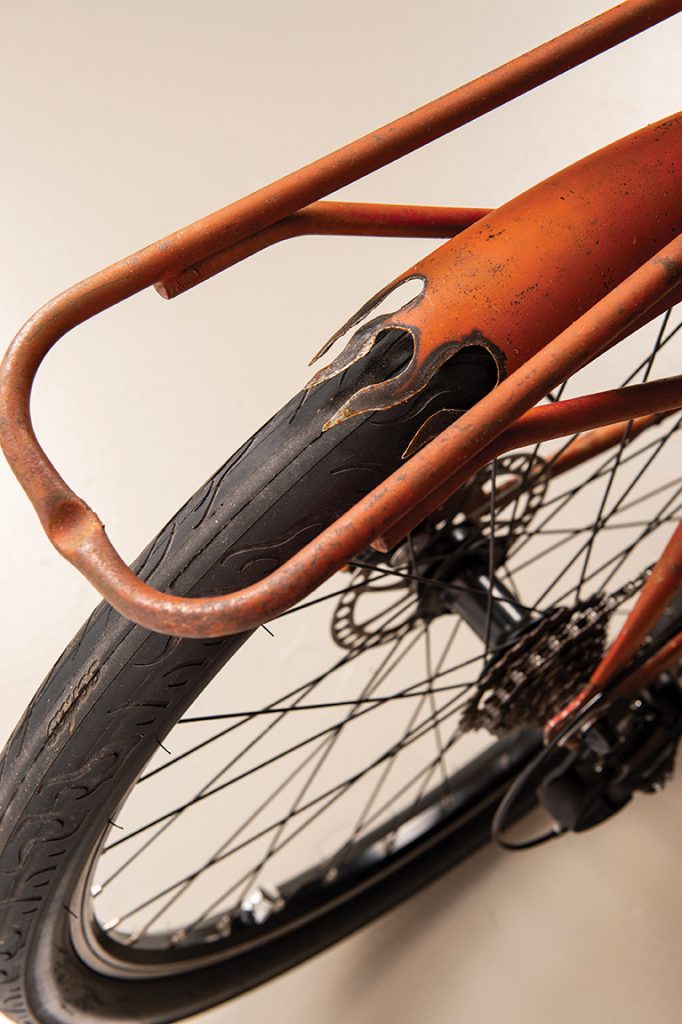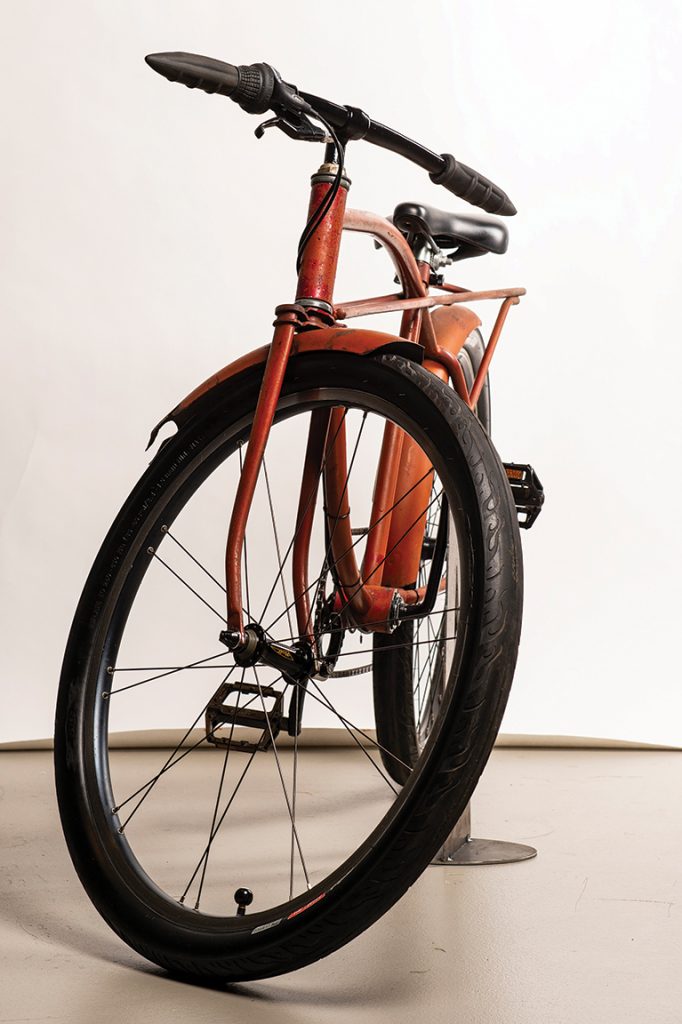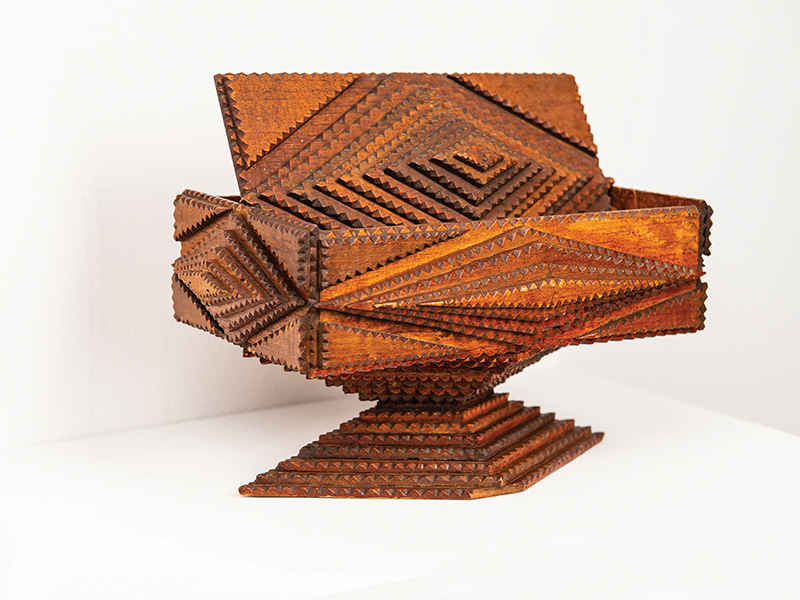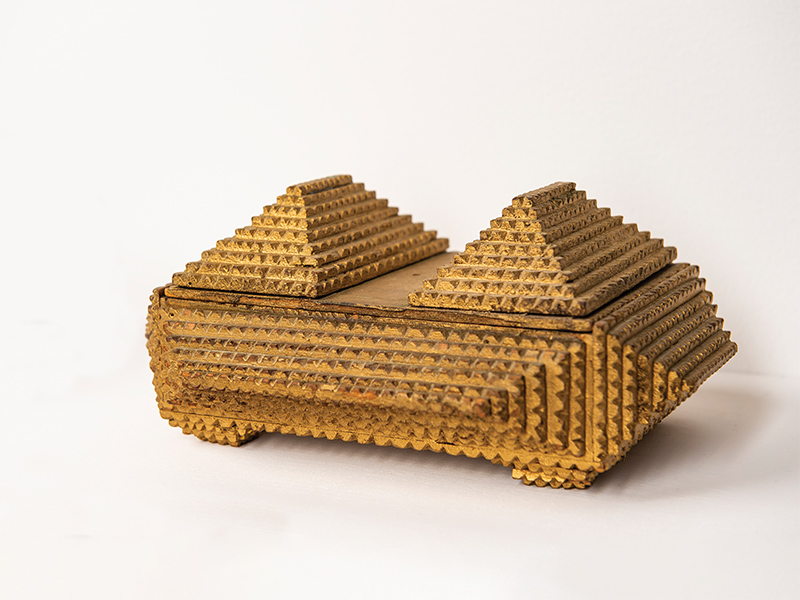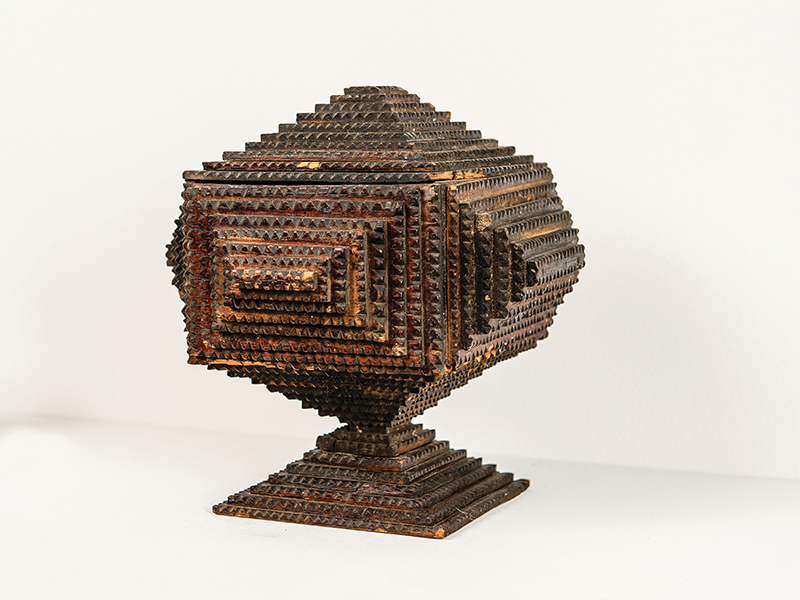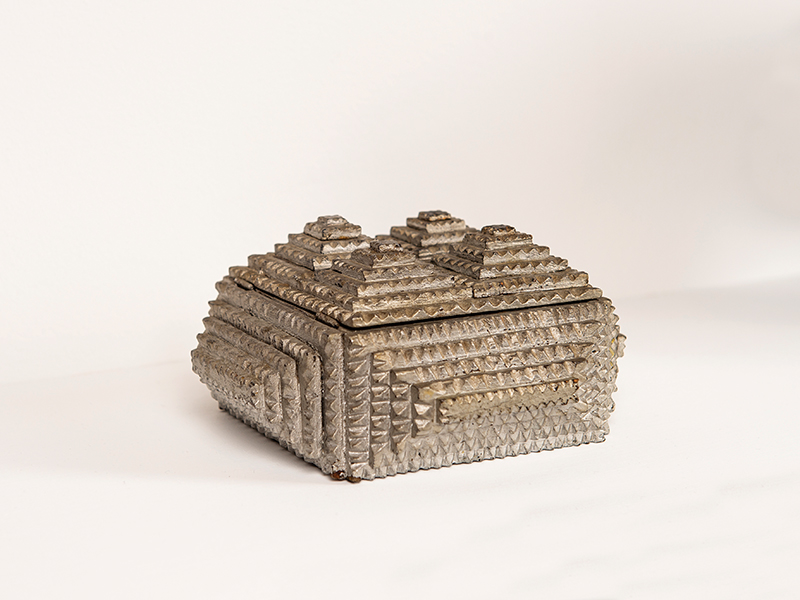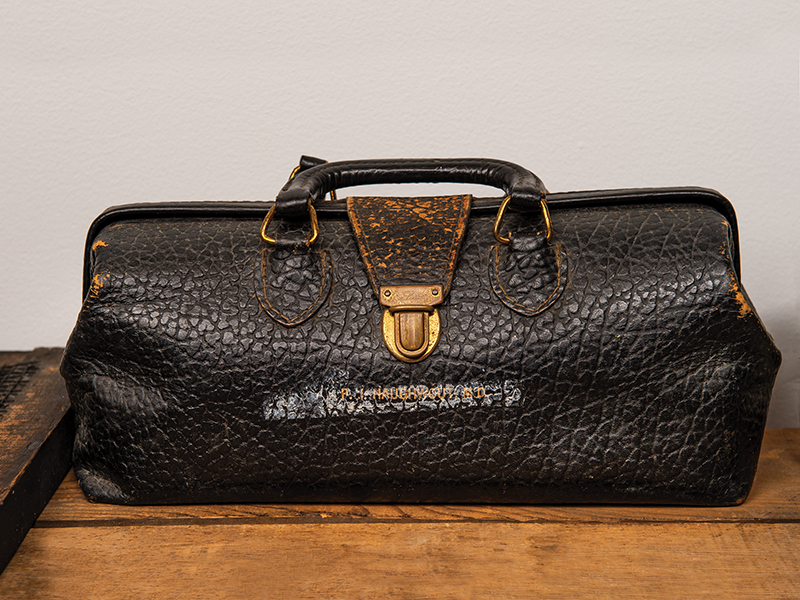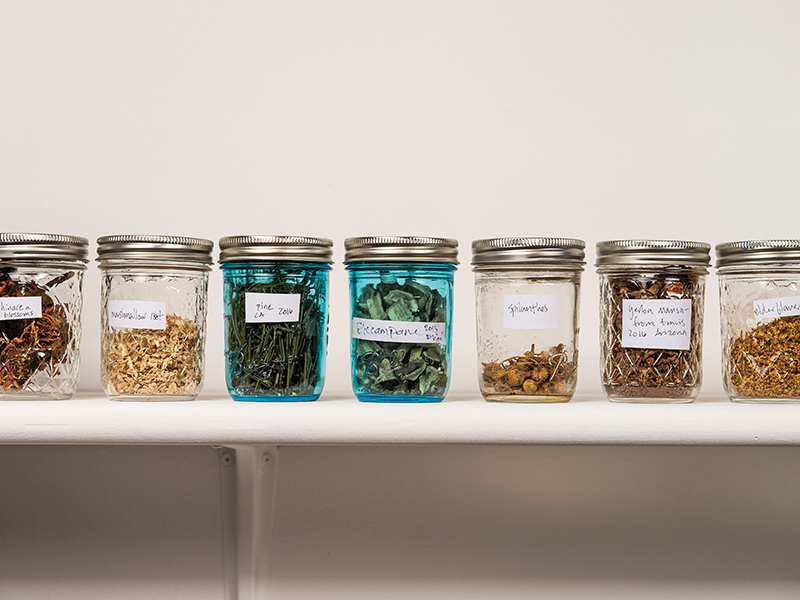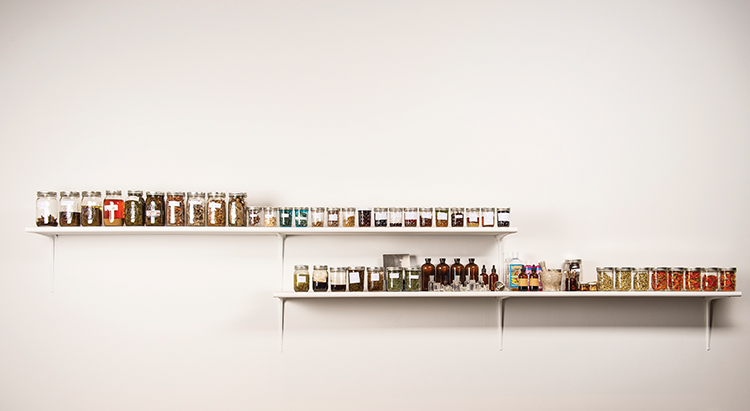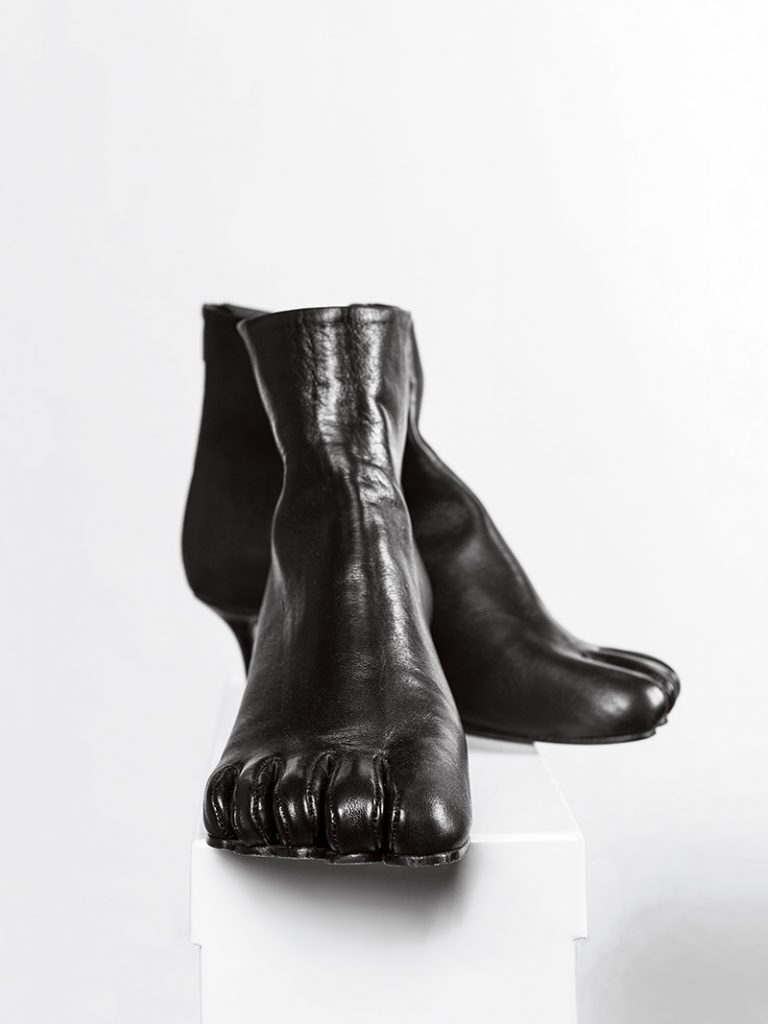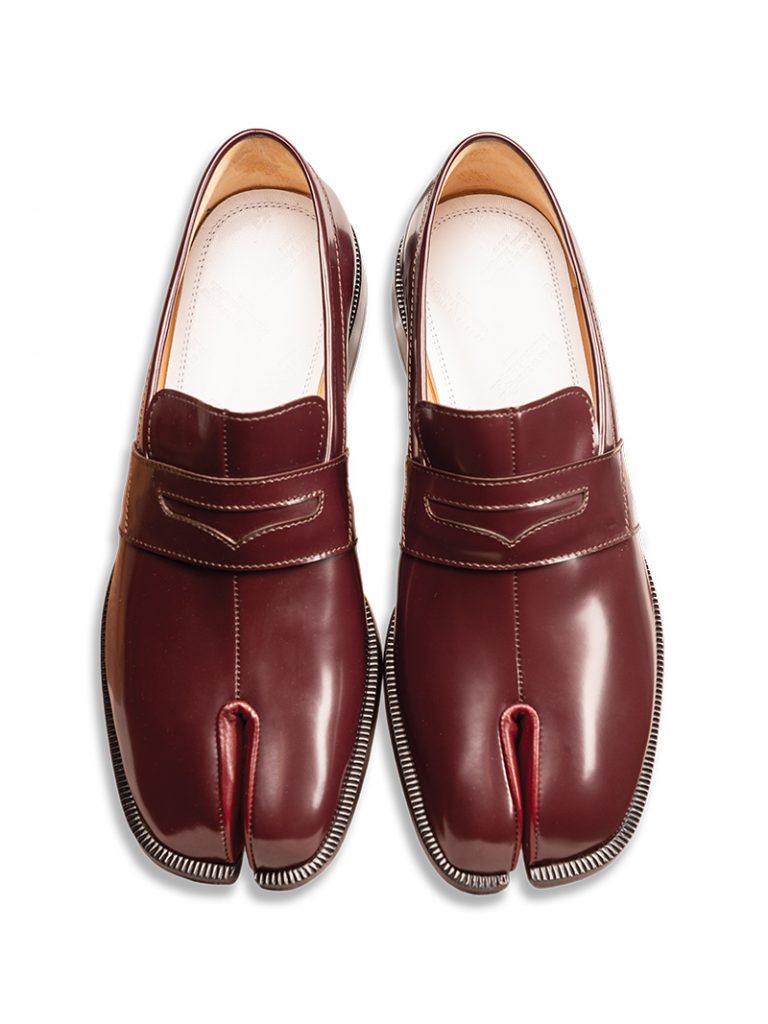Photography by Mark DiOrio
Cloven shoes, rebuilt bicycles, and jars of tinctures filled Colgate’s Clifford Gallery last fall. For the exhibition ARTS Collects, faculty and staff in the art and art history department offered a window into their personal lives. Take a look.
The Administrator
Administrative Assistant Lois Wilcox
Little Hall, which houses the Department of Art and Art History, opened in January 2001 — and Wilcox was at the center of its creation. She worked with chairs (now emeritus professors) John Knecht and Mary Ann Calo to complete tasks like organizing the move and choosing furniture. To thank her, the department gave her a gift: A typewriter just like her grandmother’s.
Wilcox keeps the piece on top of her filing cabinet, along with another she picked up at a garage sale. A donated letterpress and a selection of vintage department stamps join the collection. She says taking the pieces out of their element for the exhibition gave them an entirely new meaning. “Their own little pedestal takes them from being a few things on top of my filing cabinets to a conversation starter.”
The Bike Hobbyist
Studio Safety Technician Duane Martinez
Martinez’s role as studio safety technician involves an array of projects, like creating a system for students to scan an object to make it a 3D model. “I like to say that I show students how to make things, and I keep them safe while they do it,” he explains.
The technician uses similar skills in his personal life. A longtime lover of bicycles, Martinez collects the modes of transportation, often tricking them out to suit his fancy. He displayed a set of four for the exhibit. A pair of bikes that he calls Baby and Me were built by Martinez from extra parts and are incredibly simplified. They’re meant to be ridden together — Baby by his wife, Sami, and Me by Martinez.
Another ride, Bad Boy, was built by a friend with an eye for design and is the “epitome of innovation,” according to Martinez. Sleek with top-of-the-line parts, the bike was created with great precision. It’s complemented by a piece Martinez has dubbed Hard-Liner, which stuns with a mid-century frame and modern parts; its ornate flames are a nod to the Hot Rod community. “They’re juxtapositions of each other. One is very expensive, worth thousands of dollars, and the other one is barely worth several hundred dollars. But they function in similar ways and both have really cool features.”
The Folk Art Collector
Professor Lynn Schwarzer
Ornate with delicately carved patterns, Schwarzer’s Tramp Art boxes look as though they were created by professional artists. Quite the opposite: They’re made of old cigar boxes notched with pocket knives by men from the 1870s to the 1940s. “They were made as a means of creating, of relaxing in the evening,” Schwarzer says. She and her husband, Professor Emeritus John Knecht, started collecting them around 1980 because they were drawn to the idea that people made them with their heart and hands, and appreciate artworks created by artists working outside of established programs in the arts.
The boxes had a practical purpose for the people who made them, often functioning as sewing baskets or jewelry boxes. “They’re utilitarian, but they’re also about form and texture and the pure geometry,” she says. Schwarzer teaches studio art courses, and the boxes, in some respects, reflect her philosophy as an artist: “My sense of being an artist and studying art is to think about how one takes what one knows in the world, experiences, and is curious about, and brings that into a process of making.”
The Herbalist
Asst. Professor Margaretha Haughwout
Mirroring Haughwout’s home collection, jars of dried herbs, tinctures, oils, honeys, and other natural products lined shelves in Clifford Gallery. They’re adorned with labels about where and when the substances were harvested and whether the moon was waxing and waning when they were made. Nearby, an unlikely guest: a doctor’s bag. Haughwout ventured into herbalism at the behest of her father, a medical practitioner. “In my adolescence, I rebelled against an expensive modern medical system and began to think about ways that everyday people can heal themselves,” she explains. “That rebellion began a lifelong conversation between us.”
Plants also make an appearance in Haughwout’s art practice. In her Food Forest Studio at the Schupf Art Studios in Hamilton, a site where Haughwout conducts eco-art experiments, she hosts eco-art events such as Grafters X Change, during which students learn about ecological arts practices.
Haughwout also teaches about code-based art, or art that is distributed, procedural, or instruction-based. “My own personal art practice now travels across technology and ecology. It operates inside and outside of the gallery.”
The Shoe Connoisseur
Professor Lynette Stephenson
Click-clacking down the corridors of Little Hall, Stephenson is always sporting fresh footwear, never repeating a pair. It’s easy for her, because she owns “an Imelda Marcos level of shoes,” she says. In her collection of more than 1,000 pairs is a dozen Margiela Tabi-style shoes. Stephenson included these in the exhibition in honor of the style’s 30th anniversary.
Stephenson teaches drawing and painting courses and is interested in contemporary art and theory — a realm in which fashion fits. Still a staple at fashion week, the Tabi can appear conventional from the side — but, when the foot turns, its iconic detail is revealed. A slit separates the big toe from the rest, giving a cloven appearance. “I primarily like shoes that look odd,” Stephenson says. “I didn’t set out to make a collection. Just, I really liked them. They’re comfortable and odd looking at the same time.”
Margiela developed the Tabi following a trip to Japan, where the style is popular in sock form as part of the Wafuku, or Japanese costume. “It’s a twist on something that was traditional,” Stephenson says.
“I like in the fashion world the way they make that twist.”
Stephenson sees fashion as a type of art, and wearing an interesting accessory, like the Tabi, draws attention — as a magnificent painting would. That others notice what she’s wearing makes her feel confident. “People think fashion is superficial, but you’d be surprised how people feel differently by what they wear. It changes the way you feel.”
The Jazz Man
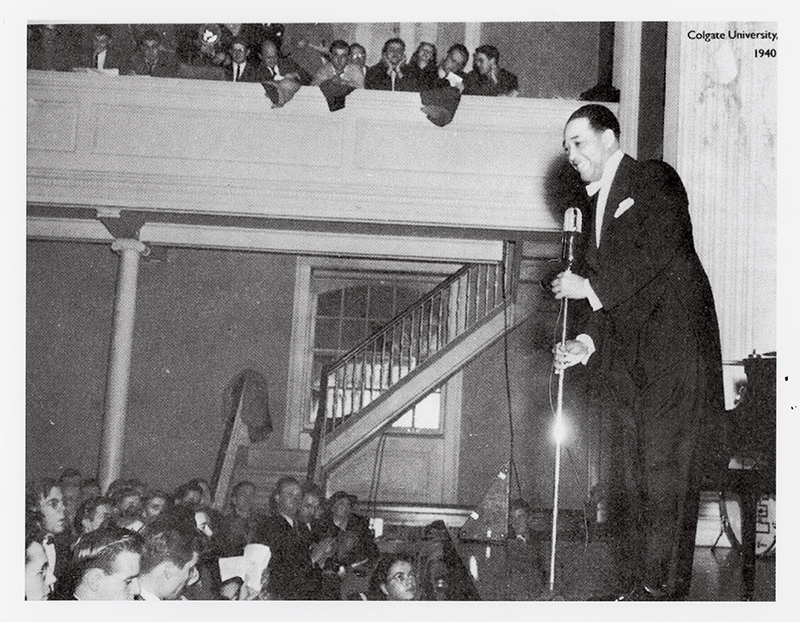
Colgate professors collecting interesting objects isn’t a new phenomenon — just look at the University’s Blackmore Jazz Archive. Founded in honor of Robert L. Blackmore ’41, William Henry Crawshaw Professor of literature emeritus, the Case Library collection features jazz recordings and books donated by Blackmore in 2001. The library’s third floor includes a listening station and archival material about Duke Ellington’s 1940 concert in Memorial Chapel. Blackmore was, of course, in the audience.
The professor first shared his passion for jazz music with the Colgate community in 1961, when he began his WRCU show Your Monday Date with Jazz. He continued the project, his labor of love, until 2001. “I enjoy tension in poetry and dissonance in jazz,” he told the Colgate Maroon in 1986. “I like the Blues. The Blues give you a glimpse into the soul.”
Throughout the course of 50 years, Blackmore compiled more than 60,000 albums. Approximately 17,000 of them are housed in the library.
ARTS Collects
Watch this highlight reel compiled from the exhibit’s opening and interviews with the collectors.

